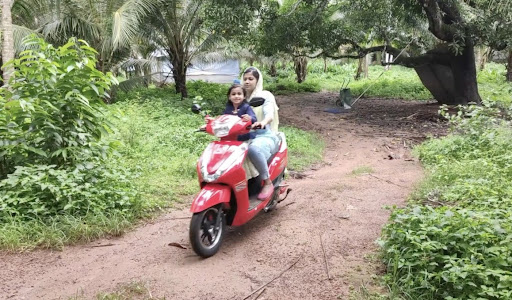At the 76th Session of the United Nations General Assembly on September 21, 2021, in New York City, Chinese President Xi Jinping in a pre-recorded video address spoke about the centenary of the Communist Party in China and mentioned COVID-19 vaccinations. Then he said, “China will step up support for other developing countries in developing green and low-carbon energy, and will not build new coal-fired power projects abroad.”
“It is clear the writing is on the wall for coal power”, tweeted Alok Sharma, President of the Conference of Parties (COP26). China had been facing increasing diplomatic pressure to renounce coal funding. Japan and South Korea made similar announcements about phasing out coal in early 2021. BBC’s Robin Brant said that China’s pledge “is the low hanging fruit. This was increasingly expected in terms of a pledge from Xi Jinping.” Jin Liqun, President of the Asian Infrastructure Investment Bank, announced that “China needs to do its utmost to export renewable tech to low-income countries”.
Days after China’s declaration, the No New Coal Compact was announced as a joint effort by Sri Lanka, Chile, Denmark, France, Germany, Montenegro, and the UK. Promising to expedite coal phase-out nationally in line with COP26’s goal of consigning coal power to history. With promises of shifts to renewable energy being made globally, China has the potential to enter an international market of renewable energy, especially in Southeast Asian countries like Bangladesh and Pakistan which depend heavily on Chinese-funded coal.
Mr. Shyam Saran, former Foreign Secretary of India and former Special Envoy and Chief Negotiator on Climate Change, adds, “China has the ability to supply solar panels or wind turbines to the international market and it has been doing so.” Taking India as an example, he continues, “the solar power industry in India is almost completely dependent upon solar panels which are imported from China. So they [China] are very well placed, in fact, for exploiting the international market if there is an expansion of renewable energy capacity in the rest of the world as a return of climate change concerns.”
In February 2021, China refused to fund coal mines and polluting power plants in Bangladesh, in a letter seen by Financial Times. In August 2021, Bangladesh’s Sirajganj district floated a tender for a solar park with expected Chinese funding of US $500mn, as reported by PV Magazine. While the shift to renewables is a welcome transition, what global problems are likely to crop up? “If you are looking at the current composition of energy infrastructure across the world, then you will see that it is still predominantly based on fossil fuels. So the great problem for countries is, what do I do with stranded assets which have been built upon the assumption that fossil fuel use will continue? And these are billions and billions in dollars worth of assets, whether it is in oil or coal.” Mr. Saran emphasizes that the poorer the country, the more difficult this transition will be.
This shift will have tangible impacts on individuals as well. Mr. Saran points out such manifestations in the employment sector, “a large number of people are employed in the fossil fuel industry across the world. When you are going to be making a shift, unless you have the ability to generate more jobs, say from renewable energy, or that the use of renewable energy is leading to an expansion of economic activity generally, you are also going to be faced with a very major social problem and an economic problem. And neither technology nor funding is today coming from the developed countries to the developing countries.” Dr. Rityusha Tiwary, Assistant Professor of Political Science and International Affairs at the University of Delhi and Visiting Fellow at Delhi-based Institute of Chinese Studies, adds, “tangible impact on all the sectors of the economy as well as all sectors of the working class, labour class included. We don’t have very strong labour laws so this compensation, the big multi-corporations are going to draw out from perhaps, the salary of the working class.”
So where does this leave Beijing’s coal-dependent international allies? The Institute for Energy Economics and Financial Analysis, a US-based non-profit, published a report in July 2021 revealing that China supports 56% of the total capacity of international coal pipeline proposals. According to another report published by the Centre for Research on Energy and Clean Air, a nonprofit thinktank, 4.5 times as much overseas coal capacity linked to China has been shelved, than progressed to construction. Indicating that overseas coal projects initially backed by China have subsequently wilted to significant political and financial challenges. For instance, Indonesia had the largest share of coal capacity backed by Chinese financing, 11 gigawatts of which have been cancelled since 2017.
Analysts expect China’s announcement to improve Beijing’s coveted Belt and Road Initiative’s (BRI) reputation for future greener energy investments. For Pakistan, for instance, where China is a major coal-based energy investor, a renewable shift would significantly reduce carbon dioxide emissions with improved air quality. This change may take time. According to Dr. Tiwary, there are several initiatives in BRI which are “coal-based infrastructural capacity-building, so that might mean that there is a slag as well in BRI because immediately, if you stop funding international projects which involve coal, then there is expected to be a kind of slugging outcome in terms of how those projects are completed. So, it’s a two-way road.”
Anushree Pratap is a second-year student at Ashoka University pursuing Political Science and Environmental Studies.
We publish all articles under a Creative Commons Attribution-NoDerivatives license. This means any news organisation, blog, website, newspaper or newsletter can republish our pieces for free, provided they attribute the original source (OpenAxis).
















